.
.Introduction
Khattak or Khatak (Pashto: خټک, Urdu خٹک), is the name of an Afghan tribe belonging to the Karlan branch of the Afghans. The tribe's history is quite ancient. One of the earliest references about them are found in the 4th century BCE in Median Empire (Media And Arachosia). They were called Sattagudai by Greek and other historians.- [Guardians of the Khaibar Pass: the social organisation and history of the Afridis of Pakistan David M. Hart Page 7]
- [The races of Afganistan being a brief account of the principal nations, By Henry Walter Bellew - 2004 - 124 pages - Page 85.]
- [An inquiry into the ethnography of Afghanistan: prepared and presented to the Ninth international congress of Orientalists, London, September, 1891 - The Oriental university institute, 1891 - 208 pages - pages 107,108,122.]
- [A glossary of the tribes and castes of the Punjab and North-West Frontier Province: Based on the census report for the Punjab, 1883 - Horace Arthur Rose, Sir Denzil Ibbetson, Sir Edward Maclagan - Printed by the superintendent, Government printing, Punjab, 1914 - Page 217.]
- [Qabila: tribal profiles and tribe-state relations in Morocco and on the Afghanistan-Pakistan Frontier - By David M. Hart - - 2001 - 254 pages - Page 152.]
- [Afghanistan of the Afghans - Bhavana Books & Prints, 2000 - 272 pages - Ikbal Ali Shah (Sirdar.) - Page 95.]
The tribe's territory is located in the Khyber Pukhtoonkhwa province of modern day Pakistan. Historical records show an earlier eastward migration from Herat, Ghowr and Ghazni.
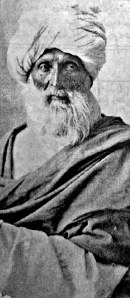
The tribe is settled along the western bank of the river Indus from as north upwards as Sammah; modern day Lund Khwar & Sher Garh near Malakand District to South through the district of Karak District, a stretch of territory more than 200 miles long. Their historic capitals are Akora Khattak, a town 50 kilometres (31 miles) east of the provincial capital, Peshawar and Teri, Kohat.
Their historical centers include Herat, Ghowr, Ghazni, Zhob, Karak, Tirah and Wana.
For the most part of their history, the Khattak were united under one combined leader, referred to as Malak, which according to Khushal Khan Khattak is a continuation of the Bani Israel title of Malak (king).
- [Journal of the Pakistan Historical Society , Volume 54, Issues 3-4, Pakistan Historical Society - 2006 - Page 86, also p77,81.]
- [Dastar nama of Khushhal Khan Khattak, Pashto Academy, University of Peshawar, 2007 - 254 pages.]
Origin
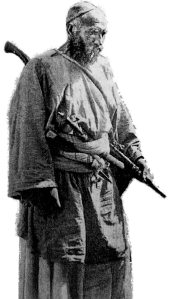
According to Nimatullah's 1620 work ''History of The Afghans'', Khattaks are amongst the oldest of the Afghan tribes.
- [Deportation by the Assyrians, Makhzan-i Afghani, page 37]
- [Herodotus, Book 3, 91, The Histories of Herodotus, George Rawlinson, Translation 1858–1860]
The Sattagudai and the Gandarioi and the Dadikai and the Aparutai, who were all reckoned together paid 170 talents.Herodotus, without assigning a name to the satrapy, tells us that Darius' yth Satrapy was inhabited by four tribes, the Sattagudai, the Gandarioi, the Dadikai, and the Aparutai.
- [The Pathans 550 B.C.-A.D. 1957" printed St Martin's Press 1958 by MacMillan and Company Limited]
The first settlement of the Khattaks was at Shawal, a valley in the Waziri country lying to the west of Bannu, near the Pir Ghal peak. They migrated thence eastwards to the British district of Bannu and settled with the Afghan tribes of Honai and Mangal, who then held it. These tribes were driven out by the Shitaks, a clan allied to the Khattaks, also from Shawal, probably during the 14th century.
- [Notes on the Tarikh-e-Murassa, Plowden, Maj.]
- [Settlement Report of Bannu, Thorburn]
Bani Israel - The Ten Lost Tribes
Bani Israel (also Bna'i Israel) literally means, the children of Israel and refers to the Assyrian captivity of Israel and the ten lost tribes that settled in Media (and Arachosia) and never repatriated to the Holy Land. Numerous historians have identified these four tribes with four of the Ten Lost Tribes.Gandarioi
Gandariori (Greek usage) Or the Yusufzai (Pashto usage) have been identified as the Tribe of Joseph (Biblical usage).- [Mountains Before the Temple, By Zechariah Donagan, Page 170, 2009 - 332 pages.]
- [Ancient pillar stones of Scotland; their significance and bearing on ethnology By George Moore, George Moore - 1865 - 179 pages, page 7.]
- [Mountain passages, Jeremy Bernstein, University of Nebraska Press, 1978, Page 256.]
- [Afghan and Pathan: a sketch, George Batley Scott, The Mitre press, 1929 - 188 pages, Page 75.]
- [All over the place: fifty thousand miles by sea, air, road and rail, Sir Compton Mackenzie, Chatto and Windus, 1948 - 292 pages, Page 231.]
- [A British tale of Indian and foreign service: the memoirs of Sir Ian Scott By Sir Ian Scott, Denis Judd, 1999 - 287 pages, Page 64.]
- [India as i Knew it, Page 341.Statistical, descriptive and historical account of the North-western Provinces of India, ed. by E.T. Atkinson [and others], North-western provinces, 1880 - Page 639.]
Aparutai
Aparutai (Greek usage) or Afridi or Apridi (Pashto usage) have been identified as the Tribe of Ephraim.(Biblical usage)- [War on Terror: Unfolding Bible Prophecy, Grant R. Jeffrey, The Doubleday Religious Publishing Group, 2002 - 240 pages, Page 56.]
- [Forum on the Jewish people, Zionism and Israel , Volume 61, World Zionist Organization. Information Dept, 1988, Page 43.]
- [The mystery of Israel's ten lost tribes and the legend of Jesus in India, Joshua M. Benjamin, Mosaic Books, 2001 - 150 pages, Page 19.]
- [In the Footsteps of the Lost Ten Tribes, Avigdor Shachan, Laurence Becker, Devora Pub., 2007 - 452 pages, Page 89.]
- [The exiled and the redeemed, Itzhak Ben-Zvi, Jewish Publication Society of America, 1961 - 285 pages, Page 200.]
- [Encyclopedia of the Jewish diaspora: origins, experiences, and culture, Volume 1 By Mark Avrum Ehrlich, M. Avrum Ehrlich - 2008 - 1320 pages - Page 1129.]
- [Afghanistan: the synagogue and the Jewish home, Zohar Hanegbi, Bracha Yaniv, Center for Jewish Art, Hebrew University of Jerusalem, 1991 - 222 pages, Page 13.]
Dadikai
Dadikai (Greek usage) or Zazi or Jaji (Pashto usage) have been identified as the Tribe of Gad.(Biblical usage)- [Ariel , Issues 112-115, Israel. Miśrad ha-ḥuts, Israel. Miśrad ha-ḥuts. Maḥlaḳah le-ḳishre tarbut u-madaʻ, Israel. Miśrad ha-ḥuts. Maḥlaḳah le-ḳishre tarbut, Israel. Miśrad ha-ḥuts. Lishkah le-ḳishre tarbut, Cultural and Scientific Relations Division, Ministry of Foreign Affairs, 2001.]
Sattagudai
Sattagudai (Greek usage) or Khattak & Shetak (Pashto usage) have been identified as the Tribe of Manasseh.(Biblical usage)- [Dastar Nama, Khushal Khan Khattak, Pashto Academy, University of Peshawar, Pakistan.]
- [Pakistan quarterly , Volumes 6-7, 1956 - Page 22.]
- [The Modern review , Volume 86, Issues 1-5, Ramananda Chatterjee, Prabasi Press Private, Ltd., 1949 - Page 314.]
- [Perspective , Volume 4, Pakistan Publications., 1971.Journal of the Pakistan Historical Society , Volume 54, Issues 3-4, Pakistan Historical Society, 2006 - Page 86.]
- [The races of Afganistan being a brief account of the principal nations, By Henry Walter Bellew, 2004 - 124 pages - Page 120.]
 Khattak - The Tribe of Manasseh
Khattak - The Tribe of Manasseh
Khattak origin from the Israelites is documented in numerous accounts and none is more convincing than the views of the Khattak themselves, and of their combined leader (of all Northern and Southern sub clans), Khushal Khan Khattak. In his book Dastar Nama, Khushal writes:Khushal Khan further contends that Daniyal (Daniel) was from Malak Talut's (Saul) progeny. Malak Talut (Saul) is from the offsprings of the brother of Prophet Ibrahim (Abraham):
"The bravery and valour in the Pukhtuns are the effect of the milk of that lioness."
- [Journal of the Pakistan Historical Society, Volume 54, Issues 3-4, Page 30]
"a continuation of the Bani Israel title of Malak (king)."
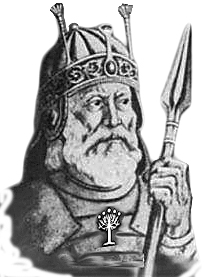
Historically it is known that the tribal name Khattak came into usage when a leader of the tribe named Luqman was given the alias Khattak and that before this, the tribe was titled by its original name.
- [A glossary of the tribes and castes of the Punjab and North-West Frontier Province: Based on the census report for the Punjab, 1883, Horace Arthur Rose, Sir Denzil Ibbetson, Sir Edward Maclagan, Printed by the superintendent, Government printing, Punjab, 1914 - Page 248.]
- [gazetteer of the dera ghazi khan district, 1883 - Page 127.]
- [The Pakistan review , Volume 15, Ferozsons Ltd., 1967 - Page 23.]
- [Quarterly journal of the Pakistan Historical Society , Volume 54, Pakistan Historical Society., 2006 - Page 85.]
- [Report of the regular settlement of the Peshawar district of the Punjab, Edward George G. Hastings, 1878 - Page 80.]
It is evident that the Yusufzai, the Afridi and the Jaji (Zazi) still retain their Bani Israel Tribal names, but for the Kattaks, this is derived indirectly from the fact that all of the Ten Lost Tribes can be accounted for in the different Afghan tribes that inhabit this region except Manasseh, since the Khattaks have been mentioned always in history with these three tribes, including by Herodotus.
- [The Histories of Herodotus, George Rawlinson, Translation 1858–1860.]
This is also confirmed by the fact that, wherever in Median Empire|Media and Arachosia (modern day Afghanistan and Pakistan), the Yusufzai have settled, the Khattak have settled beside them (except for a short period in their history when the migrated eastward to their present day abode again besides the Yusufzai in modern day Pakistan. Additionally, a sub tribe within the Khattak, called the Yusufzai-Khattaks (Lund Khwar, Jamal Garhi of District Mardan) are a union between the two tribes and thus share their heritage.
Additionally, The Khattak and the Afridi are grouped together in the Karalni Afghan tribes as being from the same origin.
- [E.J. Brill's first encyclopedia of Islam, 1913-1936 By M. Th. Houtsma, M. Th. Houtsma - 1993 - 611 pages - Page 921.]
- [Journal of the Asiatic Society of Bengal , Volume 47, Asiatic Society of Bengal, Bishop's College Press, 1878 - Page 268.]
- [The Pathan customs, Sher Mohammad Khan Mohmand, 2003 - 113 pages - Page 70.]
- [Perspectives on Hari Singh Nalwa, Prithīpāla Siṅgha Kapūra, ABS Publications, 1993 - 112 pages - Page 43.]
- [Glossary of the Tribes and Castes of the Punjab and North West Frontier Province By H.A. Rose, IBBETSON, Maclagan, 1996 - 2076 pages - Page 477. ]
- [Pathans: compiled under the order of the Government of India at the Recruiting Office, Peshawar, Richard Thomas Incledon Ridgway, Manager of Publications, 1938 - Page 4. ]
Though, an Indian group, the Bnai Manasseh claim to be from The Tribe of Manasseh and ancient migrations may very well support this, however the tribal population sizes:
- [http://www.asianews.it/index.php?art4148&len INDIA Indian converts to Judaism: lost tribes of Israel or economic migrants? - Asia News]
- [http://www.ynetnews.com/articles/0,7340,L-3831308,00.htmlhttp://www.haaretz.com/hasen/spages/1143299.html]
We know that both the Afridi and the Khattak lived in the same geographical area at the beginning of the Muhammaden era.
- [E.J. Brill's first encyclopedia of Islam, 1913-1936, By M. Th. Houtsma - 1993 - 611 pages - page 921.]
:''"at beigninning of mohammadan era khattaks occupied the Suleiman range and the northern part of the plains between these mountains and the Indus...."''.It is thus almost convenient to find that the last mentions of the Tribe of Manasseh in Media and Arachosia (mountains of Ghowr and Ghazni in modern day Afghanistan)..
- [Mystery of the Ten Lost Tribes - Afghanistan, by Rabbi Marvin Tokayer, moshiach.com website]
- [The Israeli Source of the Pathan Tribes, from the book, Lost Tribes from Assyria, by A Avihail and A Brin, 1978, in Hebrew by Issachar Katzir, at dangoor.com]
- [website of The Scribe Magazine.Tribal groups, NOVA episode, PBS.Is One of the Lost Tribes the Taliban?, by Ilene Prusher, Moment Magazine, April 2007.]
- [Afghanistan, The Virtual Jewish History Tour (retrieved 10 January 2007).]
- [Introduction: Muhammad Qāsim Hindū Šāh Astarābādī Firištah, History Of The Mohamedan Power In India, The Packard Humanities Institute Persian Texts in Translation (retrieved 10 January 2007).]
- [Bnei Menashe.com History page, A Long-Lost Tribe is Ready to Come Home, by Stephen Epstein, 1997]
- [Glossary of the Tribes and Castes of the Punjab and North West Frontier Province By H.A. Rose, IBBETSON, Maclagan Page 215.]
- [The Kingdom of Afghanistan: a historical sketch By George Passman Tate Page 10.]
- [The Itinerary of Benjamin of Tudela, translated and edited by A. Asher, Vol. 1, A. Asher and Co., London, U.K. - 1840.]
- [history of the jews h Graetz vol 2.Edrisi 12th century, a treatise on geography.]
- [Journal of the Asiatic Society of Bengal, Volume 23, Issues 5-7 By James Sykes Gamble, Asiatic Society of Bengal page 570.]
- [The Holy Book of Tobit C XIV V 5-13.]
The Tribe of Gad
Some historians consider Khattaks to be the Tribe of Gad:- [http://av1611.com/kjbp/]
- [(Gen 30:3-11, Gen 35:26; 46:16-18; Ex 1:4; I Chr 2:2, Isaiah 65:11),]
- [http://www.answers.com/topic/peake-s-commentary-on-the-bible]
- [http://www.Khyber.org]
- [(page 37 The History of the Afghans by Burnhard Dorn)http://www.wdl.org/en/item/3034/?qleng&igcu&view_typegallery]
This is also strongly echoed and verified in the words of Herodotus during the 5th century BC by the fact that of the Nations he mentions were "the Sattagyddae", the Gaddae being the morphed form of the original Gad.
Sattagudai
Numerous historians identify the Khattak with the Sattagudai.- [The races of Afganistan being a brief account of the principal nations, By Henry Walter Bellew - 2004 - 124 pages - Page 85.]
- [An inquiry into the ethnography of Afghanistan: prepared and presented to the Ninth international congress of Orientalists, London, September, 1891 - The Oriental university institute, 1891 - 208 pages - pages 107,108,122.]
- [A glossary of the tribes and castes of the Punjab and North-West Frontier Province: Based on the census report for the Punjab, 1883 - Horace Arthur Rose, Sir Denzil Ibbetson, Sir Edward Maclagan - Printed by the superintendent, Government printing, Punjab, 1914 - Page 217.]
- [Qabila: tribal profiles and tribe-state relations in Morocco and on the Afghanistan-Pakistan Frontier - By David M. Hart - - 2001 - 254 pages - Page 152.]
- [Afghanistan of the Afghans - Bhavana Books & Prints, 2000 - 272 pages - Ikbal Ali Shah (Sirdar.) - Page 95.]
Let us now refer to the third passage cited, in which Herodotus, without assigning a name to the satrapy, tells us that Darius' yth
Satrapy was inhabited by four tribes, the Sattagudai, the Gandarioi, the Dadikai, and the Aparutai.
Bellew has gone further and identified the Sattagudai with the famous Khatak tribe, and the Dadikai with an obscure branch of Kakars whom he calls Dadi."
Conclusion
Some of the Afghan tribes are therefore the Ten Lost Tribes, these include:Yusufzai - Tribe of Joseph
Afridi - Tribe of Ephraim
Zazai - Tribe of Gad OR
Gadoon - Tribe of Gad
Khattak - Tribe of Manasseh
Rabbani - Tribe of Reuben
Levani - Tribe of Levi
Ashuri - Tribe of Asher
Shinwari - Tribe of Simeon
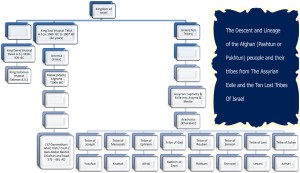
Therefore for the question "Are Khattaks (or the Khattak) Jewish?" e.g. , the answer is, as far as the Khattaks are concerned, it is obvious they are as much Bani Israel or Jewish as the Yusufzai and the Afridis. However, they like all Afghans are NOT Jews. They are Jeiwsh.
There is a difference and it is substantial whether considered from an Afghan or from the Jewish perspective.
All these Afghans do accept and realize their Bani Israelite origins from the Ten Lost Tribes of Israel but they are staunch Muslims and have no intention whatsoever to leave Islam or migrate to the Holy Land.
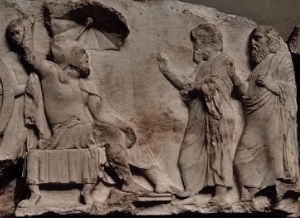
No comments:
Post a Comment